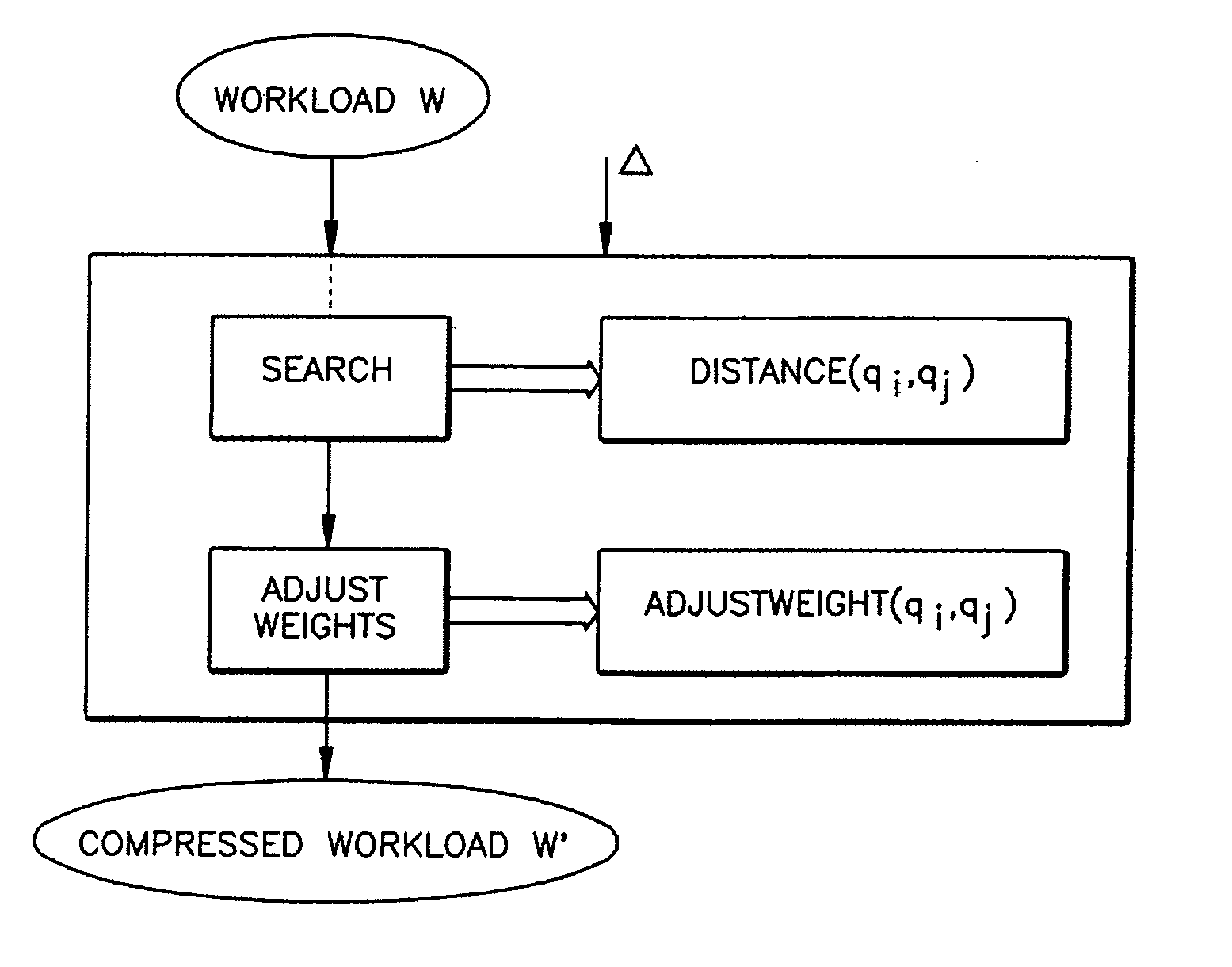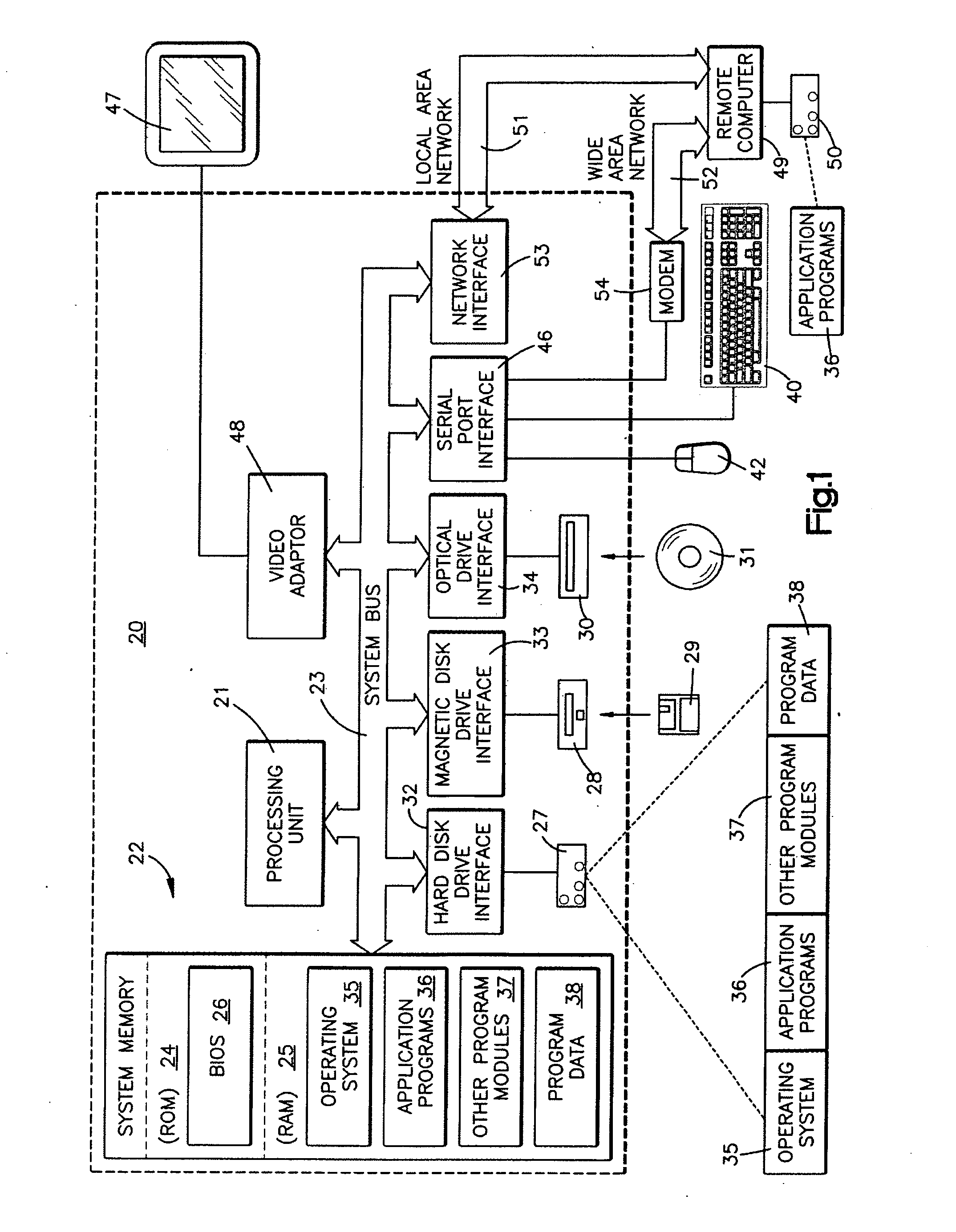Compressing database workloads
a database and workload technology, applied in the field of compression of database workloads, can solve the problems of large workloads, significant impact on running time, and ineffective compression of workloads
- Summary
- Abstract
- Description
- Claims
- Application Information
AI Technical Summary
Benefits of technology
Problems solved by technology
Method used
Image
Examples
example 1
Workload Compression for Index Selection
[0023] Selecting the right set of indexes is important for the performance of a database system. Automatically selecting appropriate indexes for a database is an important task since it reduces the burden on database administrators, and hence the total cost of managing the database. Recently, several major commercial database systems have developed tools to automate the task of choosing indexes. An index selection tool takes as input a workload W and a database, and produces as an output R a set of indexes appropriate for the given workload. To evaluate the quality of the result R, these tools typically use as FA (W,R) (where A=index selection), the query optimizer estimated execution time of statements in W if the result R is implemented (i.e., if the set of indexes R is materialized in the database). Thus, e.g., specifying δ=0.05 for index selection implies that if one is compressing the workload an acceptable compressed workload W′ provide...
example 2
Workload Compression for Approximate Answering of Aggregation Queries
[0024] The goal of approximate query processing (AQP) is to allow efficient but approximate answers to ad-hoc queries against large relational databases. Random sampling is an approach for approximately answering aggregation queries (e.g., queries computing SUM or COUNT aggregate expressions). In this approach, the query is executed on a sample of the data rather of the entire data, thereby returning approximate answers but speeding up the query significantly. Recently, several printed publications have recognized the importance of using workload information to pick samples of the data and thereby improve upon the straightforward approach of uniform random sampling. Thus, the workload W is analyzed in a preprocessing step and this information is used to produce as result R, an appropriate set of samples of one or more tables in the database. These samples are chosen with the objective of minimizing the average rel...
example 3
[0076] (Continued from Above): Suppose the benefits of an index on column age for Q1 and Q2 are 50 units and 40 units respectively. The actual total benefit from index on column age for W is 50*1+40*1=90 units, whereas for W′, this benefit is 40*2=80 units. Therefore, as pointed out earlier, we have biased the workload away from picking an index on column age. Using the approach described above, the weight of Q2 in the compressed workload would be w2′=w2+w1*α12 / α22=1+1*50 / 40=2.25. We can now easily verify that the benefit of the index on column age for the compressed workload is 2.25*40=90, which is same as the benefit for the original workload.
Finally, we note that for the AQP application, we use the default AdjustWeight (qi,qj) function, which simply adds the weight of qi to qj.
Computer System
[0077] With reference to FIG. 1 an exemplary data processing system for practicing the disclosed invention includes a general purpose computing device in the form of a conventional compu...
PUM
 Login to View More
Login to View More Abstract
Description
Claims
Application Information
 Login to View More
Login to View More - R&D
- Intellectual Property
- Life Sciences
- Materials
- Tech Scout
- Unparalleled Data Quality
- Higher Quality Content
- 60% Fewer Hallucinations
Browse by: Latest US Patents, China's latest patents, Technical Efficacy Thesaurus, Application Domain, Technology Topic, Popular Technical Reports.
© 2025 PatSnap. All rights reserved.Legal|Privacy policy|Modern Slavery Act Transparency Statement|Sitemap|About US| Contact US: help@patsnap.com



